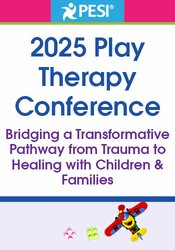Playful, Somatic, and Sensory-Based Strategies for Child Therapy

In recent years, neuroscience has illuminated the powerful connection between our brains, bodies, and emotions. For child therapists, integrating this knowledge into sessions doesn’t have to mean clinical jargon or rigid techniques. Instead, it can be a playful, body-based journey that aligns beautifully with how children naturally express and regulate themselves.
These techniques also empower children to recognize and respond to their own bodily cues, promoting self-awareness and long-term emotional regulation outside of the therapy room.
1. Co-Regulation Through Rhythm
Understanding Polyvagal Theory: A Quick Primer
Polyvagal theory, developed by Dr. Stephen Porges, helps us understand how the nervous system responds to safety and threat. Therapy grounded in polyvagal theory focuses on helping children move back to a state of safety (ventral vagal) through regulating experiences. It identifies three primary states:- Ventral Vagal (Safe and Social) – When children feel safe, they can connect, learn, and play.
- Sympathetic (Fight or Flight) – In this state, children may be hyperactive, anxious, or aggressive.
- Dorsal Vagal (Shutdown/Freeze) – Children may appear withdrawn, numb, or dissociated.
Why Somatic and Sensory Play Works
Play-based therapists know that children process the world through their bodies. Somatic (body-based) and sensory strategies offer direct access to the nervous system, allowing you to help your young clients shift out of dysregulated states without relying on words. When the nervous system is regulated, children can process, learn, and integrate new information more readily, improving therapeutic outcomes.These techniques also empower children to recognize and respond to their own bodily cues, promoting self-awareness and long-term emotional regulation outside of the therapy room.
Playful Integration Strategies for Therapists
Here are some fun, neuroscience-informed ways to bring these strategies into your sessions:1. Co-Regulation Through Rhythm
- Use drumming, clapping games, or rocking to establish a shared rhythm.
- Rhythm helps regulate the autonomic nervous system and builds connection.
- Incorporate tactile play like kinetic sand, water beads, or textured objects.
- Offer weighted blankets or body socks for deep pressure input that calms the nervous system.
- Invite children to show how different feelings "move" in their body (e.g., stomp like anger, curl up like sadness).
- Mirror their movements to build attunement and co-regulation.
- Introduce playful breathing exercises (e.g., "blow out the birthday candles" or "breathe like a dragon").
- Use stuffed animals on the belly to show how breath moves the body.
- Help children create a "safety fort" using blankets and pillows.
- This physical space mirrors the internal feeling of safety promoted by ventral vagal activation.
- Use animal metaphors to describe nervous system states (e.g., "turtle time" for dorsal shutdown, "cheetah mode" for fight/flight).
- Let children create their own characters to embody different emotional states.
The Therapist's Nervous System Matters Too
Children co-regulate with the adults around them. Your own nervous system plays a crucial role in helping a child feel safe. Mindful presence, grounding techniques, and attunement aren’t just helpful—they’re essential.2025 Play Therapy Conference

At the 2025 Play Therapy Conference, you’ll experience the unmatched power of Play Therapy—the most trusted approach for helping children heal and thrive.
Join us for 2.5 dynamic days and gain a therapeutic toolbox filled with ready-to-apply techniques to break down emotional barriers, build resilience, strengthen attachments, and foster family bonds...
...empowering young clients to face future challenges with confidence and strength!
This inspiring event features the brightest minds in the field, including keynote speaker Stephen Porges, the visionary behind Polyvagal Theory, alongside an all-star line-up of play therapy experts.
Join us for 2.5 dynamic days and gain a therapeutic toolbox filled with ready-to-apply techniques to break down emotional barriers, build resilience, strengthen attachments, and foster family bonds...
...empowering young clients to face future challenges with confidence and strength!
This inspiring event features the brightest minds in the field, including keynote speaker Stephen Porges, the visionary behind Polyvagal Theory, alongside an all-star line-up of play therapy experts.
Meet the Expert:
Dora Henderson is a Registered Play Therapist Supervisor (RPT-S™) and Licensed Mental Health Counselor Qualified Supervisor (LMHC-QS), specializing in integrating the power of play with EMDR and the integration of neuroscience with play therapy. She is also a TraumaPlay™ Supervisor and an EMDR Consultant-in-Training, and the co-host of the Neuroscience of Play Therapy Summit at the Beach. Dora is passionate about helping individuals of all ages heal from traumatic experiences and move towards a happier, healthier life. She has training and certifications in various areas, to include Sand Tray Therapy, TraumaPlay™ , Theraplay®, MAP, Adlerian therapy, as well as the Safe & Sound Protocol. Dora is also the creator of beautiful puppets and books, to include Neuro &the Ception Force Friends™ series, Polly Vagale, Neuro & The Ception Force Friends and The Vagus Nerve Super Highway, as well as the Adventures of Sandi & Clammy series. Her trainings, consultations and supervision, and professional work integrates play, puppetry, expressive arts and neuroscience in easy-to-use and family-friendly ways.
Learn more about her educational products, including upcoming live seminars, by clicking here.
Learn more about her educational products, including upcoming live seminars, by clicking here.



